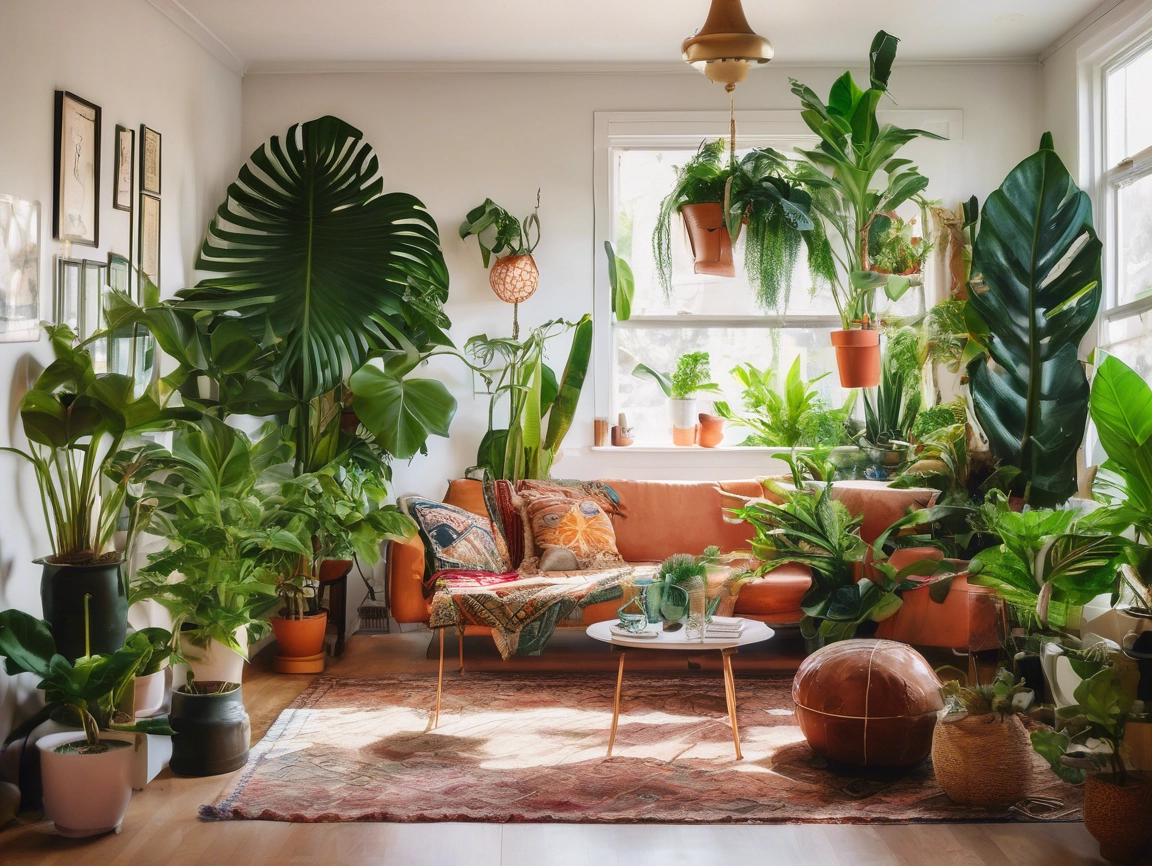
Beautiful Plants For Your Interior

Home is more than just a place to rest — it’s a reflection of personality, lifestyle, and emotional comfort. As design trends continue to evolve, one timeless element remains constant: plants. With their organic charm and quiet vitality, plants have become essential in contemporary home styling. Not only do they beautify interiors, but they also create a living, breathing environment that promotes tranquility, health, and aesthetic balance.
Styling your home with plants goes beyond randomly placing pots on windowsills. It involves thoughtful design, understanding light and space, and blending greenery with your existing décor to create harmony and life in every room.
The human connection to nature — known as biophilia — plays a powerful role in how we feel within our living environments. Indoor plants bridge the gap between urban living and the outdoors, offering a daily interaction with nature’s soothing presence.
Plants soften architectural lines, add texture and color, and break the monotony of static interiors. They’re dynamic, changing with the seasons and growth cycles, giving your home a sense of life and movement. Psychologically, greenery has been shown to reduce stress, increase creativity, and even improve air quality.
Whether you’re styling a cozy studio or a spacious family home, incorporating plants can dramatically enhance the atmosphere and functionality of your space.
Successful plant styling starts with the right selection. Not every plant thrives in every environment, so understanding your home’s conditions is key.
Light Levels: Assess each room’s natural light. South-facing windows get the most sun and suit plants like fiddle leaf figs, bird of paradise, or cacti. North-facing spaces are better for low-light tolerant varieties like ZZ plants, peace lilies, or snake plants.
Space Considerations: In smaller homes or apartments, opt for vertical arrangements such as hanging planters, wall-mounted pots, or tiered plant stands. For open spaces, large floor plants like monstera or rubber trees can define corners or act as natural room dividers.
Maintenance Level: If you’re new to plant care or have a busy schedule, choose low-maintenance options. Pothos, philodendron, and succulents are forgiving, while ferns or calatheas require more consistent humidity and attention.
When adding plants, think in terms of balance. A single large plant can anchor a space, while smaller plants grouped together create cohesion. Use plant stands to elevate shorter plants and create visual hierarchy.
Balance doesn’t mean symmetry. You can group a tall cactus with a few trailing pothos on shelves nearby to create an asymmetrical yet balanced look.
Plants offer an incredible variety of leaf shapes, colors, and finishes. Mixing textures — like pairing the glossy leaves of a rubber plant with the feathery fronds of a fern — adds depth and richness to your design.
Likewise, contrast is key. Use dark pots against light walls or place bright green plants next to wooden or neutral backdrops for striking visual impact.
While most houseplants are green, many have colorful hues or variegated leaves. Match the plant tones with your existing color palette. Warm-colored interiors pair well with rich green or burgundy-toned plants, while cool, minimalist spaces benefit from the silvery greens of eucalyptus or dusty miller.
Pot color and style also matter — match pots with your room’s decor (e.g., terracotta for rustic, white ceramics for modern, woven baskets for boho).
Use large plants to create focal points — like placing a monstera next to a reading chair or a tall areca palm in an empty corner. Build layers by placing medium and small plants around, on shelves, or in hanging positions.
Layering plants of different heights and leaf sizes brings depth and a sense of natural growth to your interior — just like in a real garden.
The living room is the heart of the home and ideal for showcasing statement plants. Consider a tall indoor tree like a fiddle leaf fig or rubber plant in a decorative pot. Use shelves or bookcases to hold small potted plants, and hang trailing varieties like string of pearls or ivy near windows.
Coffee tables and side tables are great for succulents or bonsai trees. Grouping plants with candles, books, or ceramic décor pieces creates balanced vignettes.
Plants in the bedroom create a calming, restful atmosphere. Snake plants and peace lilies are popular because they release oxygen at night. Keep it simple — one or two plants on a bedside table, dresser, or windowsill can make a huge difference without overwhelming the space.
Use soft, textured pots or natural materials like rattan to enhance the relaxing mood.
Herbs like basil, rosemary, or mint not only look good but are practical too. Place them on sunny windowsills, or hang small planters on wall racks. For a modern look, line up small terracotta pots on open shelves.
Trailing plants such as pothos or philodendrons can soften sharp kitchen lines and add a fresh element to cooking spaces.
Bathrooms, often humid with limited space, are perfect for ferns, calatheas, or spider plants. Hanging plants in macramé holders or placing pots on a shower shelf can transform the room into a mini spa.
Ensure the plants receive some natural light — even a frosted or small window can work if the plant is tolerant to low light.
Like other home accessories, plants can be rotated or replaced seasonally to keep your interiors feeling fresh. For example, add blooming plants like orchids or anthuriums in spring, or bring in warm-toned pots and deeper foliage varieties in autumn.
Cleaning your plants’ leaves regularly, pruning dead growth, and refreshing soil can all help keep them visually appealing and healthy.
Plant styling isn’t just about appearance — it aligns with broader values of wellness and sustainability. Decorating with living plants reduces the need for artificial décor items, and choosing local, pesticide-free options supports green living.
Some people even propagate plants, exchanging cuttings with friends or growing new ones from clippings — a sustainable and satisfying way to expand your indoor garden.
Styling your home with plants is a creative and personal journey. It’s not just about following trends or filling empty corners; it’s about cultivating a living environment that nurtures you physically, emotionally, and aesthetically.
Plants invite us to slow down, care, and engage with our surroundings. They remind us that home is not static — it grows and evolves, just like nature. With a thoughtful approach, anyone can turn a living space into a thriving, elegant oasis of green.
